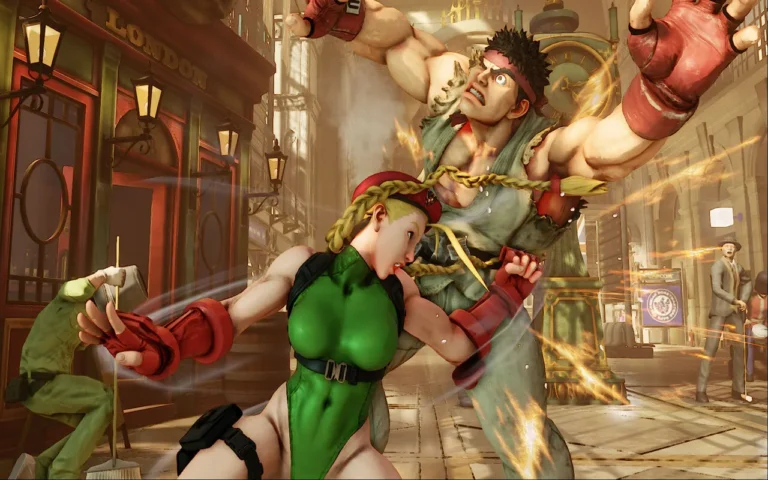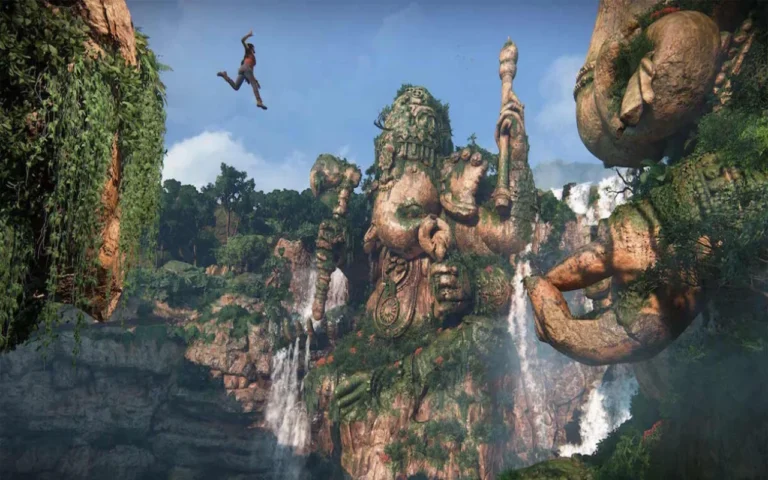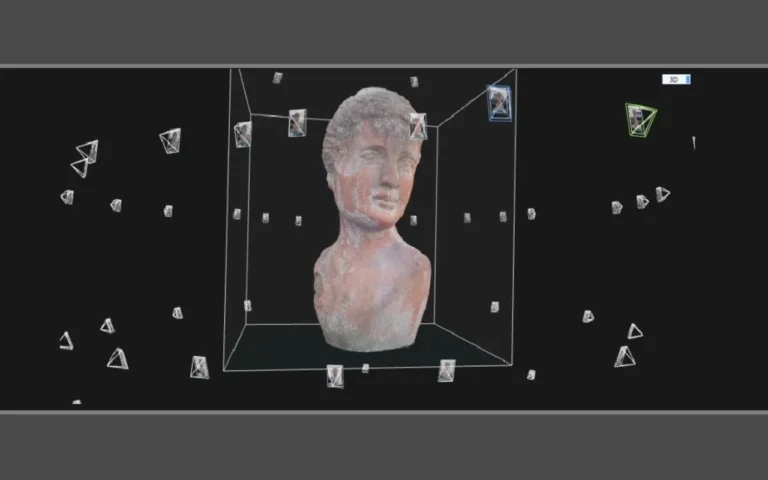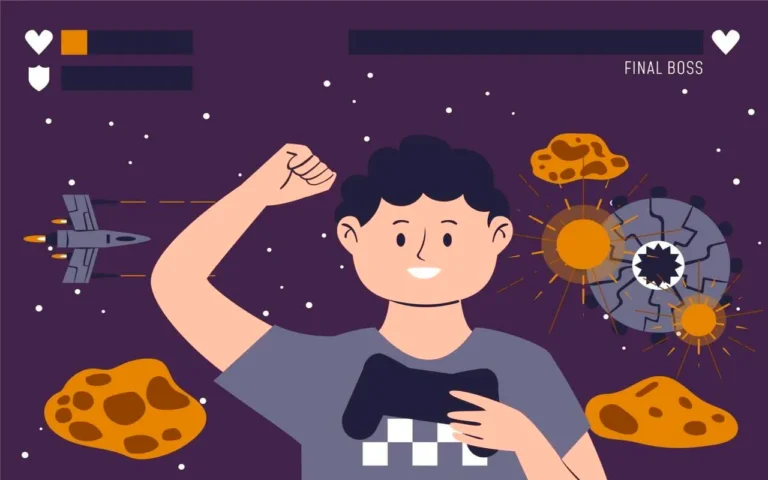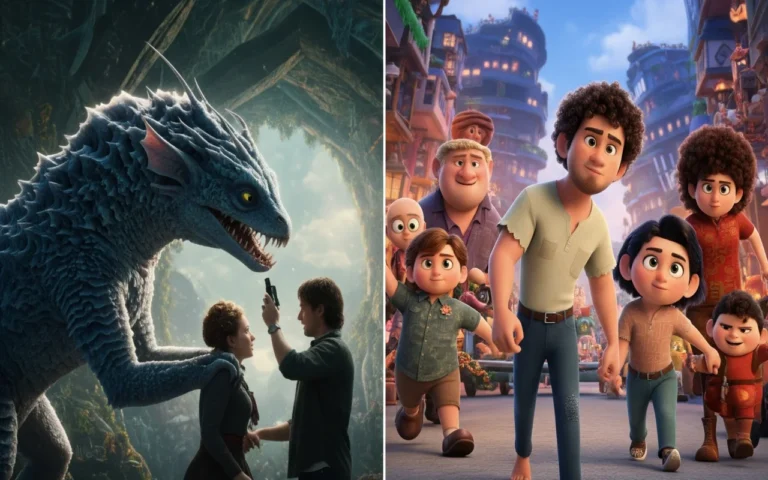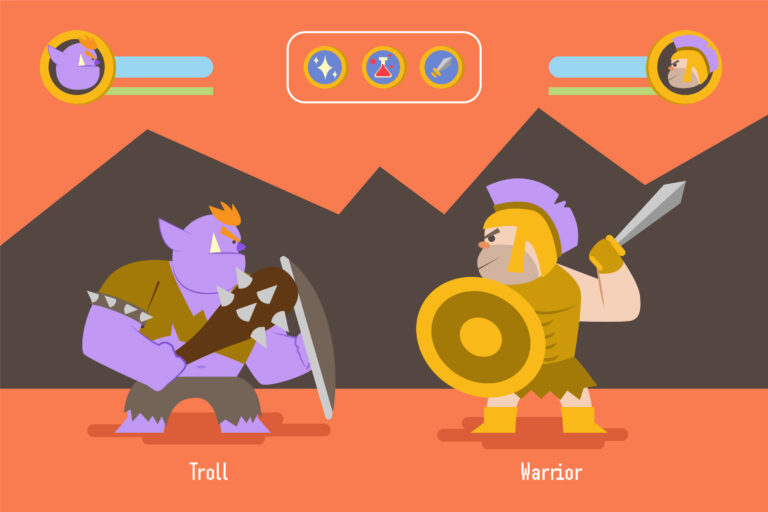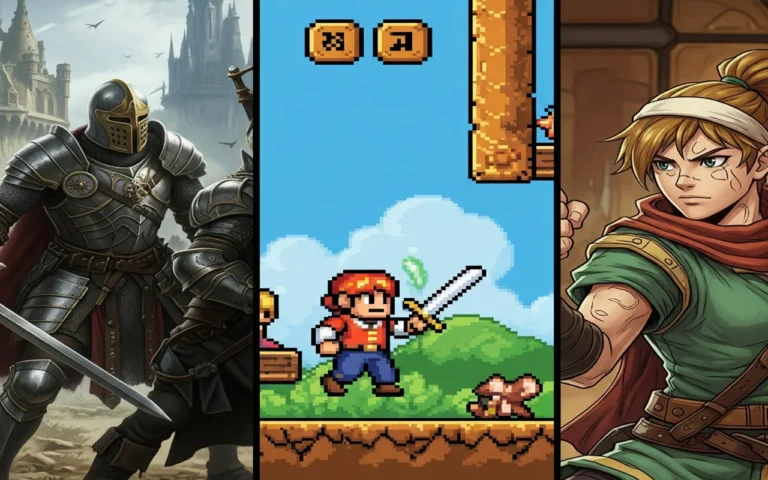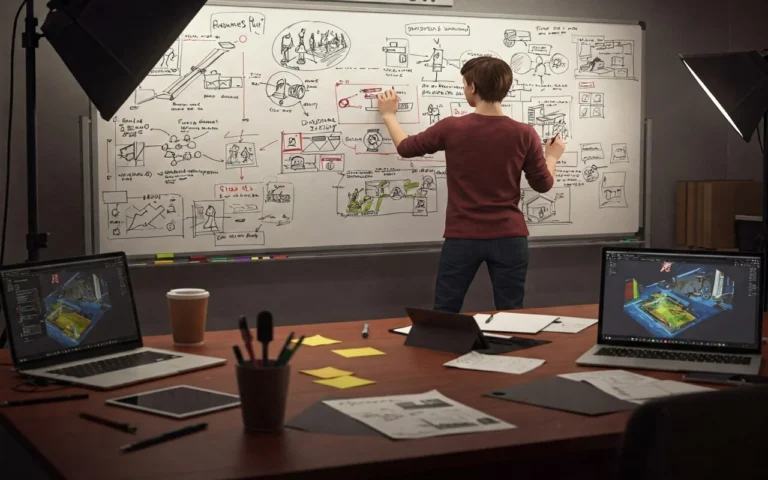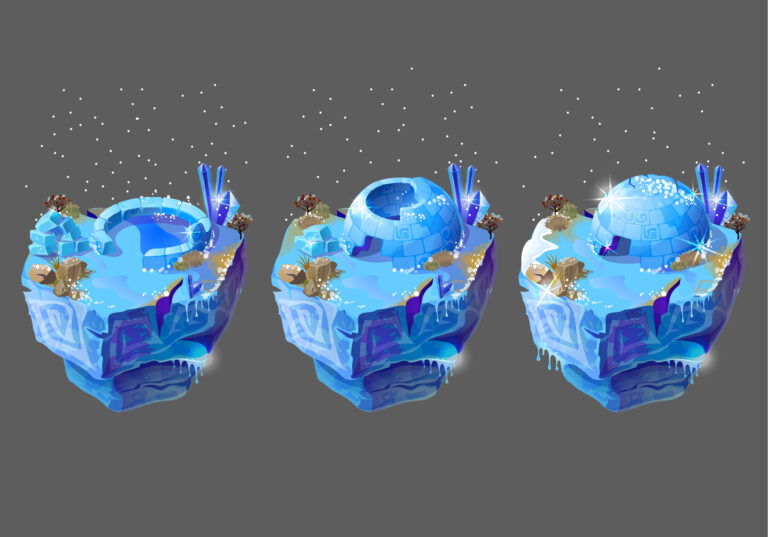Stylized art fundamentally changes how players interact with and perceive game worlds. Unlike the focus on technical exactness found in photorealistic graphics, every game art studio utilizes stylized visuals to communicate character, theme, and emotion through abstraction.
Using bold shapes, unique proportions, and imaginative color palettes, stylization creates recognizable aesthetics that often overcome the limitations of time and hardware. From Cuphead’s hand-drawn look to Zelda’s cel-shaded charm, stylization grants creative freedom while strengthening narrative expression.
In this article, we will explore how stylized art influences not only a game’s look but also how it feels, plays, and endures!
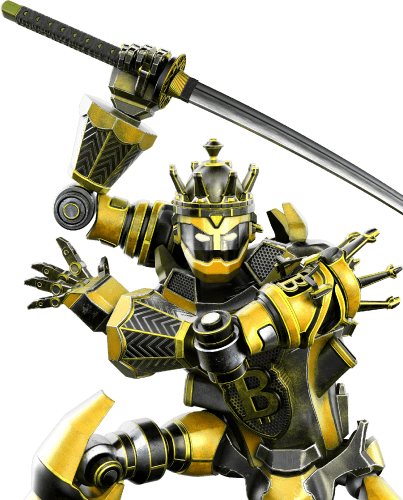

Need Game Art Services?
Visit our Game Art Service page to see how we can help bring your ideas to life!
What Is Stylized Art in Games?
Stylized art in games is the deliberate choice to change or disregard realism to achieve a unique artistic style. Instead of mimicking the real world, artists exaggerate shape language, colors, and movements to heighten emotion and narrative tone.
This is essentially about interpreting reality rather than replicating it. Whether it’s painterly environments, low-poly minimalism, or cel-shaded animation, stylized art captures the essence of an idea, not its exact literal form.
This approach gives developers immense room for experimentation and uses player psychology to connect emotionally to the world’s mood and story. Next, let’s discuss why studios continue to select stylized art over realism.
Why Do Developers Choose Stylized Art Over Realism?
Stylized art isn’t an easy way out; it’s a strategic choice! It enables teams to establish a strong artistic identity while avoiding the extensive game design production and rendering costs associated with photorealism.
Since stylized assets rely more on creativity than on computational power, they can be successfully used across various devices, from consoles to mobile.
Furthermore, their timelessness prevents a game from looking obsolete as technology advances.
For instance, Fortnite and Valorant remain visually appealing years after their launch because their design is built on clarity and cohesion, not on pixel perfection.
Developers also value the creative flexibility that stylization offers for mood, gameplay readability, and accessibility.
What Are the Core Aspects of Stylized Art Style?
Stylized design gets its strength from a series of intentional artistic decisions. These visual ingredients define the very soul of a stylized game.
Let’s examine the specific elements that define this visual language:
Colors
Stylization uses color theory for emotion and storytelling in game art, not just for realism. Artists craft palettes that symbolize different themes, such as soft pastels for tranquility, saturated reds for danger, or complementary hues to direct the player’s focus.
In Journey, warm desert gradients suggest loneliness and hope, whereas Hades utilizes striking neons and deep shadows to convey the tension of the underworld. Carefully balanced color harmonies keep the visuals expressive yet easy to read.
Proportions and Features
Stylization thrives on exaggeration. Oversized weapons, chibi-like heads, or elongated limbs quickly communicate strength, humor, or agility.
These exaggerations make characters more memorable and their roles instantly recognizable, even in outline. Consider the cast of Overwatch, where each hero’s proportions and posture tell their story before they speak.
Textures and Details
Instead of pursuing minute realism, stylized games simplify textures to reinforce tone and readability. Artists hand-paint surfaces to reflect mood and world logic, with wood appearing smooth and whimsical, and metal shining like watercolor.
This hand-painted texturing approach, brilliantly employed in Sea of Thieves, creates harmony between character and environment while lessening visual clutter.
Shading Approaches
Stylized shading methods like cel-shading or flat lighting remove unnecessary realism, emphasizing contrast and composition. They direct the viewer’s eye toward important gameplay elements.
The Legend of Zelda: Wind Waker popularized this style, showing that strong design is more important than technical realism. This technique has since become an inspiration for both indie and AAA titles.
Animation Style
In stylized animation, motion exaggeration breathes life into the art direction. Animators use “squash and stretch,” snappy timing, or exaggerated poses to convey energy and emotion.
Cuphead’s 1930s-inspired animation and Fortnite’s dynamic emotes demonstrate how motion can reinforce personality, keeping visuals consistent and appealing.
How Does Stylized Art Shape Gameplay and Player Experience?
Stylized art impacts more than just aesthetics; it defines how players read and feel the game!
Character Design
Clear silhouettes, shapes, and gestures help players instantly relate your game character design to their abilities during fast-paced gameplay.
A tank appears solid and grounded; a rogue looks agile and sharp. This visual language enhances both gameplay clarity and emotional connection.
Tone and Immersion
The art style establishes the emotional tone and narrative depth. Dreamlike environments can evoke a sense of wonder, while exaggerated worlds highlight humor or absurdity.
Stylization functions as a visual metaphor, intensifying story and theme in ways that realism often cannot.
Accessibility
Simplified forms and clear contrasts improve visual readability and performance across diverse devices. Stylized art ensures that crucial elements, such as UI design, hazards, and enemies, stay legible under all conditions, improving user accessibility for all players.
Artistic Longevity
Unlike realism, stylized design doesn’t suffer from aging as hardware changes. Games like Team Fortress 2 and World of Warcraft retain their broad appeal because their aesthetics rely on cohesive direction, not just on technological novelty. This artistic unity ensures cultural and visual endurance.
What Are Some Iconic Examples of Stylized Games?
Stylized art has defined many of the industry’s most iconic and influential titles.
World of Warcraft
World of Warcraft uses exaggerated fantasy shapes, vibrant colors, and painterly textures, enabling it to create an expansive universe that remains visually unified two decades later. Every area tells a story through silhouette and color.
Overwatch
Overwatch is a prime example of art readability, combining a Pixar-like character design charm with competitive clarity. Each hero’s look, motion, and character color palette guarantee instant recognition and emotional engagement across global audiences.
The Legend of Zelda: Wind Waker
Initially controversial, Wind Waker’s cel-shading became a touchstone for artistic courage. Its expressive faces and comic-book lighting offer a timeless visual storytelling impact that surpassed the early 2000s attempts at realism.
Sea of Thieves
With hand-painted skies, exaggerated forms, and glowing seascapes, Sea of Thieves feels like a living artwork. Its unified stylization amplifies the game’s sense of shared exploration and adventure.
Final Words
Stylized art remains one of the most effective visual storytelling tools in gaming. It converts visuals into emotion, abstraction in games into player immersion, and design into visual identity. By prioritizing imagination over imitation, developers achieve lasting beauty, performance flexibility, and cultural memorability.
Whether through cel-shaded pirates, hand-painted textures, or cartoon heroes, stylization invites players to experience creativity in motion. This art form serves as a timeless acknowledgment of the power of art direction to craft the worlds we play within.
